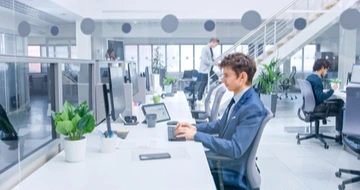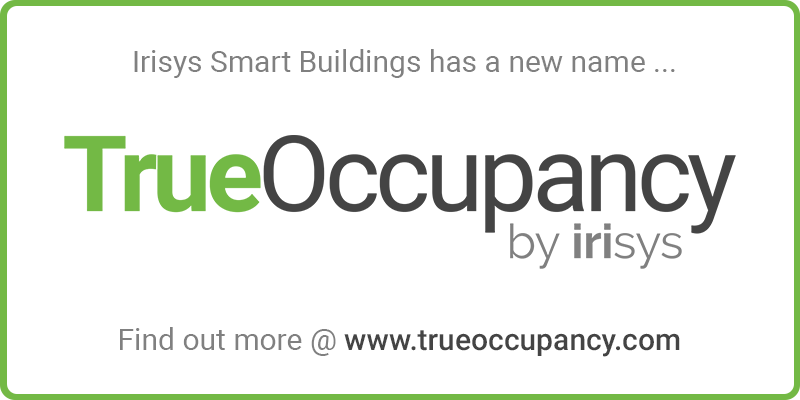Office Design & Space Utilization Driven By People Counting Data
When you think of improving space utilization at your corporate office facility, you are more likely to think about creative uses of space or the latest trends in interiors, but certainly not about scientific data concerning the movement of people within the facility.
But times are changing and new types of data are becoming available. Intelligent technologies employed by leading retailers are making their way into space utilization programs within corporate and lease-tenant environments.
People counting sensors have been helping retailers correlate traffic to sales and even identify the most popular areas of the store for years. Today retailers not only count people, but are identifying traffic patterns within the store.
While people counting data used in isolation is an important metric in space utilization programs, what has sparked a lot of interest among interior planners are the traffic flow patterns showing details of human activity throughout a facility. By understanding this data, office planners can frequently decrease the total office space required and deliver substantial rent cost reduction opportunities.
People counting sensors can identify places in corporate facilities that experience high flow intensity, low flow intensity, and that are most used, and least used. They will even show traffic patterns of where (and how often) people walked throughout the facility. Real data is collected and can be displayed numerically or graphically.
The methodology for this kind of tracking is simple. People counting sensors are set up at the entrances and in various zones throughout the facility to measure activity such as conference room and office usage and which corridors are most frequently traveled. What is unique about this approach is the results: actual empirical data on space usage. Data gathered can refute incorrect assumptions and take people’s opinion out of the mix. Real data can be the driver for effective building consolidation and rental cost reduction strategies.
For example, corporate management may have “guesstimated” information that indicates the lunch room is the most heavily used room in the facility. Or the board room is almost never used. Or certain departments are the hubs of human activity. The results from ongoing internal flow analysis can often be surprising – shedding new light not only on productivity but actual facility usage, uncovering patterns of use that had not been previously considered.
Using this data, space can be repurposed more intelligently. Instead of one large conference room, a facility might set up two or three smaller conference rooms. At larger facilities, space can be consolidated allowing the organization to be more productive in less space and with fewer floors resulting in a significant cost savings.
It is important to note when specifying people counting sensors, accuracy and consistency of the count data is of primary concern. The key to valid people flow metrics is the precision of the data at each counting location. Employing inaccurate sensors will eventually create a cumulative error that, over time, will render the data useless. Selecting the most accurate people counting devices available is essential.
In an era of smart buildings, smart stores, and ever emerging technologies, it isn’t surprising that space designers are embracing newly available intelligence that is helping them be more effective. The consultants, architects, and other outside vendors who do space utilization studies appreciate having the empirical insight, the “extra tool in the toolbox,” so to speak. It helps differentiate their approach and it provides actual data their clients can rely on.
Creativity, purpose, and the latest trends in interior designs will always be a part of space utilization programs. Soon however, one of the primary drivers in these types of projects will be people counting and traffic data from Irisys products.
Share this
You May Also Like
These Related Posts

Leveraging People Counting Analytics For The New Workplace

4 Office Space Management Best Practices

Why is space utilization important and what is the relationship with space occupancy?
Connect with us
Need more information? Ready to get started? We're here to help, get in touch.



